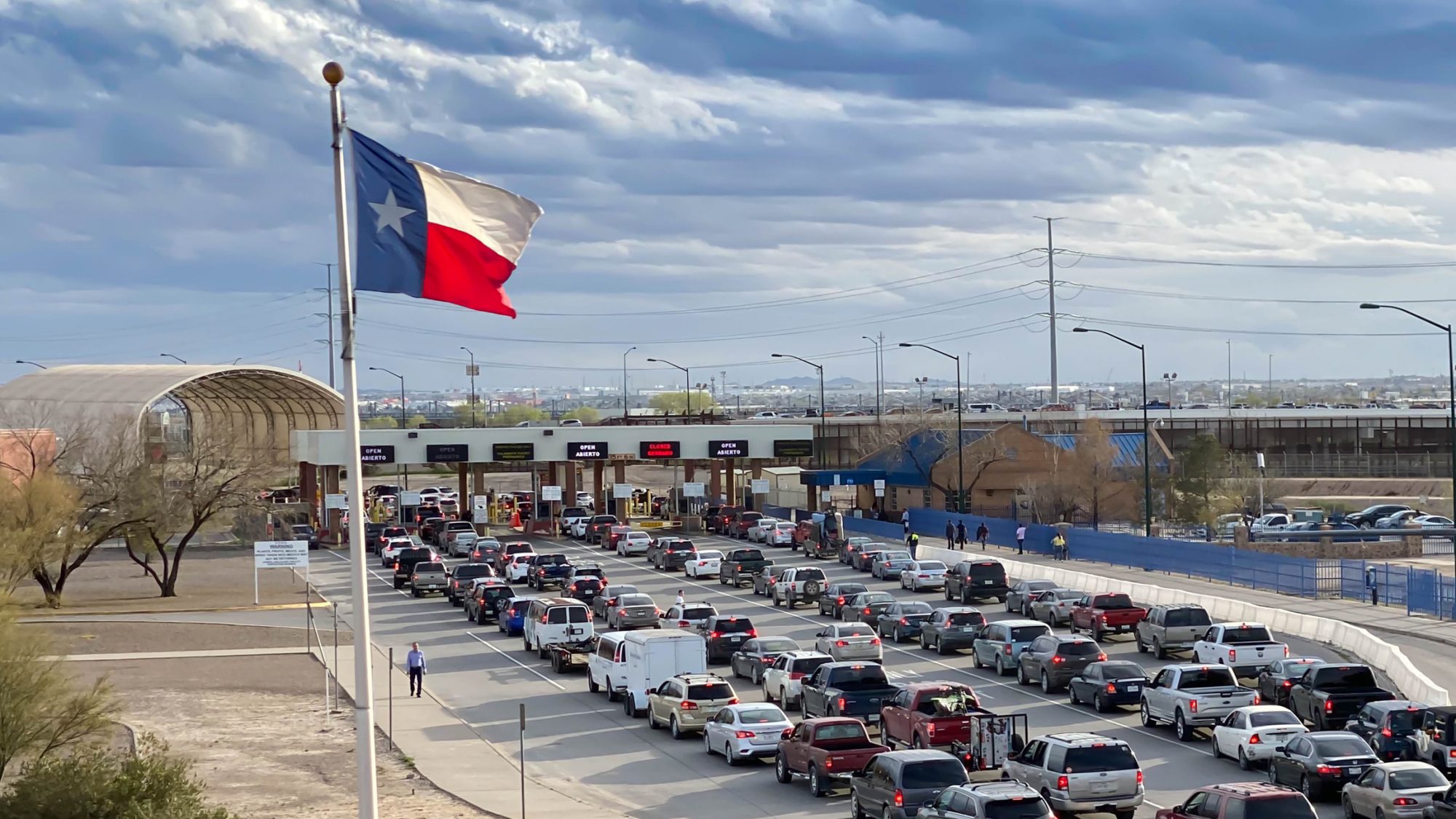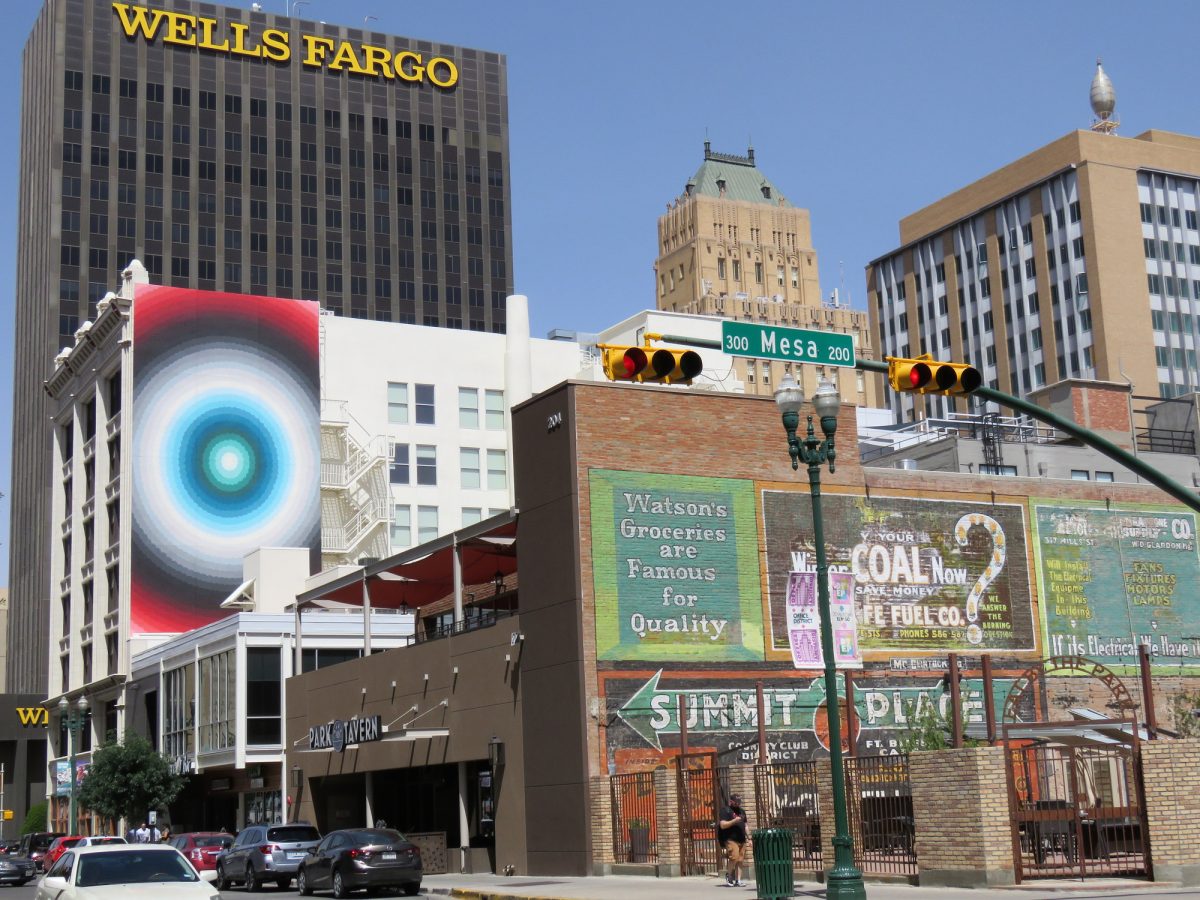
Mural "Sister Cities" in south El Paso. Photo courtesy of Adam Walke
Ph.D. student Adam Walke spent 14 years in El Paso, Texas, before coming to CSU – and life at the border will forever shape the way he thinks about economics.
“For me, there are basically two broad connections between borders and economics. First, the idea that land can ‘belong’ to people, whether individually or collectively, is fundamental to both property institutions and the existence of national borders. Second, economics as a discipline is closely associated with public policy, which leads economists to often take nation states as a fundamental unit of analysis. I think this can, at times, distract from the role of borders and border enforcement in maintaining global inequality,” Walke said.

Walke is focusing his dissertation research on Mexican policy reforms of the 1980s and 1990s that reduced tariffs, privatized state-owned enterprises, and generally reduced the role of the state in the economy. His research seeks to understand impacts of big policy changes, such as privatized communal property, which contributed to a hollowing out of Mexico’s agricultural sector and created a new industrial working class.
“One consequence of this slew of free market reforms was that many peasants could no longer afford to grow traditional staple crops like maize because they could not compete with the low prices of U.S. imports. As a result, these farmers abandoned the countryside en masse and sought work in the United States or in maquiladoras (export-processing plants) near the northern border,” Walke said.
Big industrial hubs like El Paso and Juarez exist specifically because that border exists, characterized by a tension that fuels economic activity. Companies who deal in trade have an incentive to locate on the border, which creates jobs and attracts more people, making these regional economies and supply chains interdependent.

“Consumers may not realize how much they rely on Mexico to manufacture a lot of appliances, electronics, and other consumer goods. Things that are too heavy to ship from China are much cheaper to import from Mexico. Many of our televisions are made in Tijuana, and many parts of our automobiles are made in Ciudad Juárez,” Walke said.
The rhetoric in the last two U.S. election cycles has been to “make Mexico pay.” But given these interconnected economies, Walke says an economic hardship to one side of the border will surely be felt on the other. For example, Walke co-authored a study that found recessions in U.S.-Mexico border economies can be predicted by a flattening of the yield curve for either country, confirming that several of the southern border regions in Texas, California, and Arizona are influenced by economic conditions in Mexico.
Additionally, tighter borders have economic consequences. Economists identify September 11, 2001, as a pivotal moment where increased border patrolling caused a “thickening” of the border: increased wait times at ports of entry, increased direct and indirect costs of trade, and slowed growth of U.S. imports from Mexico.
“Increasing costs to companies might make them prefer a more expensive supplier in the U.S. than a cheaper supplier in Mexico, which then passes on those added costs to consumers,” Walke said.

These border cities also rely on the movement of people across the border for activities like cross-border shopping. In 2019, Walke co-authored a study on the impacts of the peso/dollar exchange rate and price differentials between US and Mexican states given that many residents of Northern Mexico shop in the Southwestern U.S. – affecting labor market conditions for clothing retailers, gas stations, restaurants, and general stores.
While not all economists would necessarily agree, Walke favors economic integration and open borders to benefit people of both nations, and move us toward a greater global equality.
“I think it’s possible to envision an integrated North American economy that is more just. Reducing barriers to immigration would be a start.”
Immigration economics: a story of people

Like trade, immigration is a complicated web of economic models – and it’s personal.
Professor Anita Pena grew up in San Diego, where many of her high school classmates came from Mexico every day. In this bi-national community, living on one side of the border and working or studying on the other was a common way of life. Now as an economist, Pena is primarily motivated to explore the margins of documented and undocumented immigrant life – which is itself a border between groups of people created by the legal status framework.
Pena says economic models typically view immigration through two lenses: in one sense, immigrants are part of a labor supply that might be modeled for regional and cyclical effects. In the other, some dimensions of migration can be compared to a “trade” of goods and services.
“Some economists think about people flows as commodity flows, which is a dehumanizing assumption. It’s important to remember that immigrants, first and foremost, are people, so any story about the economics of immigration is inevitably about people,” Pena said.
Part of that story includes the financial benefits people seek when they migrate, such as moving to a place with more jobs, higher wages, better public aid, school systems, and amenities. There are also monetary costs associated with moving and what economists call “opportunity costs” – the things given up a person could have gained had they stayed in their place of origin.
The host country experiences economic impacts of that migration, including added labor resources and capacity for economic growth, increased national income and increased standards of living. Immigrant workers produce goods and services that otherwise would not be produced, which generates income, and benefits employers and native workers whose skills complement those of the immigrants.
It’s important to remember that immigrants, first and foremost, are people, so any story about the economics of immigration is inevitably about people.
To understand this relationship, Pena says we can look at the case study of agriculture. Migrant farmworkers, both documented and undocumented, produce much of the fruits and vegetables consumed in the U.S., and at a wage that keeps prices low. However, with government and economic policy changes making immigration less attractive, farm workers have been less willing to migrate from Mexico – meaning many U.S. farmers are struggling to hire workers.

On the other hand, some economists do warn of a classic “labor supply shock” and that increased competition for jobs drives down employment and wages for all workers, exacerbating inequality for native workers whose education and skills are most like that of immigrant workers.
Who is right? Pena says it depends, and it’s possible that both positive and negative impacts happen simultaneously, but to different groups of employers and workers.
“One question we ask is, ‘Who are the winners and losers when there are large flows of people across borders?’ On net, many economists see more gains from immigration in the U.S. That said, other economists have made arguments that some U.S. workers are hurt. It’s important to investigate if native and immigrant workers are working together in complementary ways that increase productivity, or if the relationship is a substitution wherein a migrant worker is substituting for a domestic worker,” Pena said.
The big picture is a large web of empirical questions that have not fully been solved – but Pena advocates that a stronger and well-designed social safety net could safeguard against some losses and inequality.
“Although there is not perfect consensus among immigration scholars, many agree that immigration tends to increase productivity and national income because you have more workers, more economic activity, and more people paying taxes. In other words, immigration increases the overall ‘size of the pie,’” she says.
“Where we might see an increase in inequality is in those limited impacts to labor markets, particularly harming lower-income workers with similar skill sets who face increased competition for jobs. But remember, because the ‘pie’ is bigger, that extra slice could be redistributed.”
Disparate impacts mean more research
Walke and Pena have partial answers to questions that contribute to a large, complex picture of immigration and trade across the U.S.-Mexico borders. Because the question of border economics is so complex, it is often more revealing to focus in on impacts to a specific group, and there’s far more research to be done – particularly to better understand the economic experiences of the estimated 10.5 million undocumented residents in the U.S. who are mostly left out of the data.
The conclusions the U.S. can draw, though, are that both immigrants and our neighbors to the South play important roles in our economy; that benefits of trade and immigration are extensive; and that reactionary policies can have unintended consequences. The degree to which we prioritize care for the well-being of our citizenry, our immigrant populations, and global neighbors across all borders will inform the policy approaches we take, remembering Pena’s words that economics is always about people.
Navigating Borders
From water to dance, science to film, clay to gender, the liberal arts helps us navigate the borders in our lives that are physical, metaphorical, or cultural.
